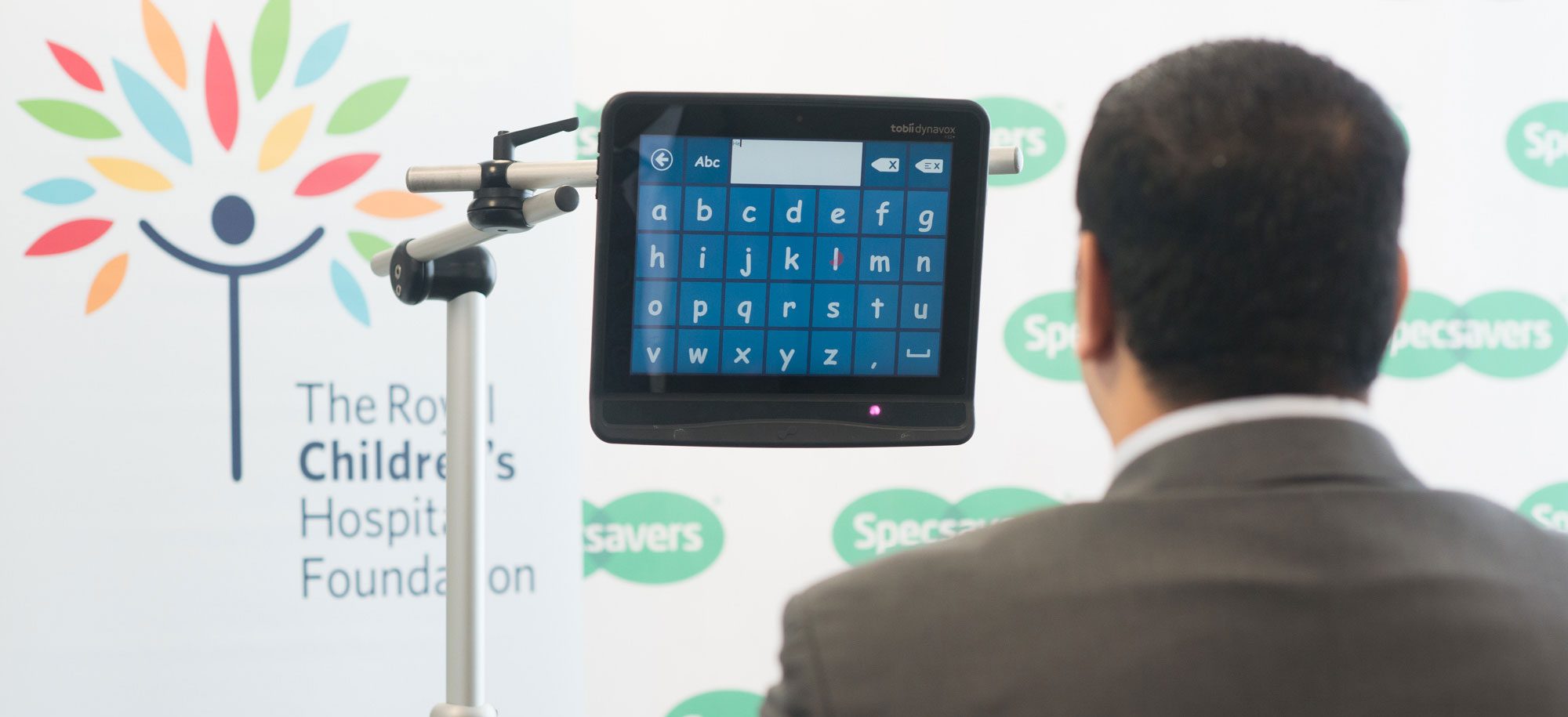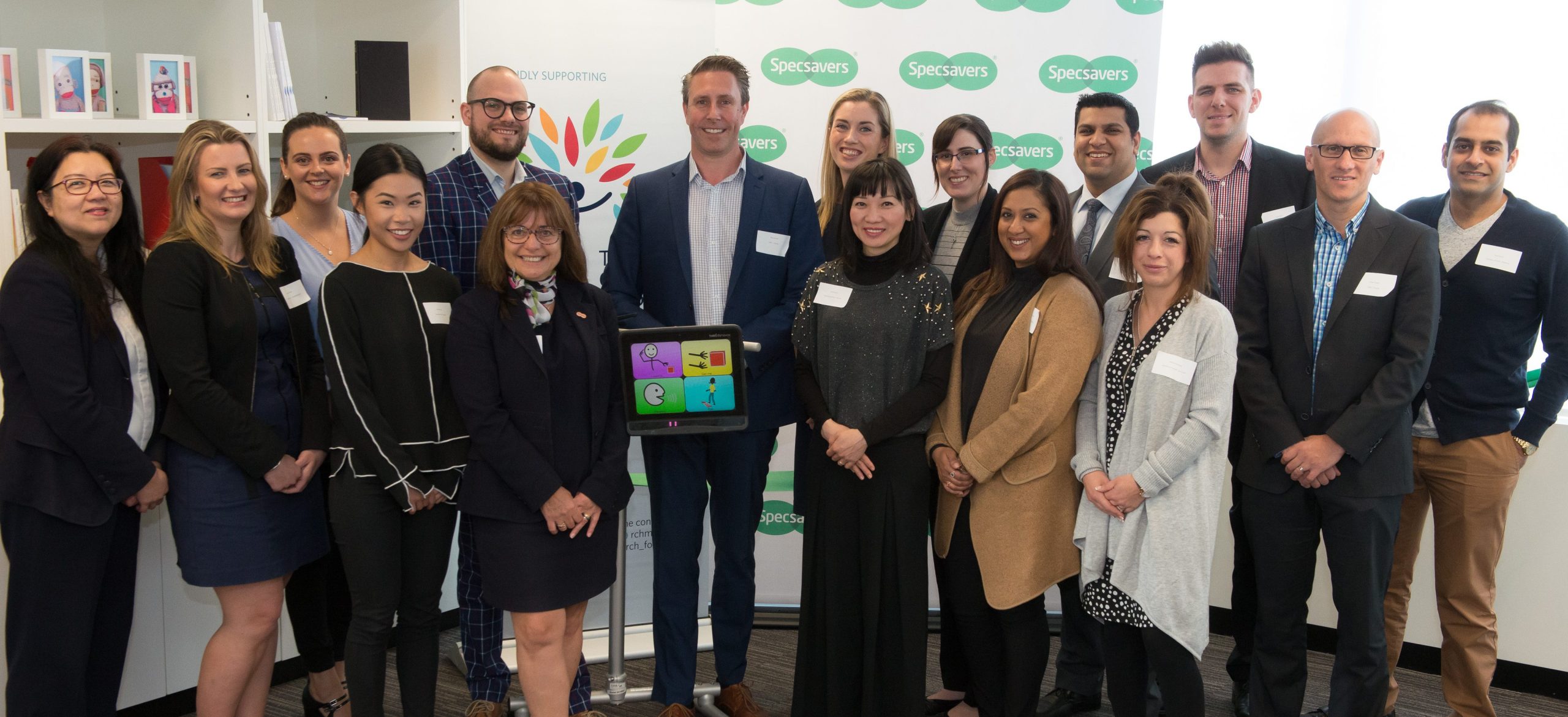Kyle Bozanic is a pretty standard 12 year old. Sport mad and willing to give anything a go, Kyle, like most other kids his age, also uses technology to communicate. The difference is that Kyle controls his device with his eyes.
Arriving as a new sibling for his brother Ryan, parents Kylie and Frank had no way of knowing how scary the birth of their second child and the weeks which followed would be. Mid-delivery, Kyle had a heart attack. Medical teams worked quickly, and soon he was intubated and transferred to intensive care.
‘’It was the scariest thing that I’ve ever been through in my life,’’ said mum Kylie, ‘’but we all stuck together and made it through.”
Over a year went by until they realised something else was wrong. Kyle was having problems standing and his communication wasn’t strong. After a series of tests, the family learnt that their young boy would have trouble walking and talking for the rest of his life.
“Kyle was diagnosed with quadriplegia dystonia, which means he has involuntary muscle movements, has trouble communicating and requires walking aids to get around,” said Kylie.
Through spending time at the RCH, Kyle was introduced to the Tobii Eye Gaze device and a range of other communication tools which has allowed this bright young boy to communicate with his family, friends and teachers.
For many children at the RCH who have suffered a stroke, brain injury or severe degrees of cerebral palsy, losing the ability to move or talk but being completely conscious in your surrounds is a reality. Now, thanks to the generosity of Victorians, a new eye gaze communication device has arrived at the RCH which is revolutionising the way that these patients can communicate, and speech pathologist Nat Weekley has seen the benefits first hand.
“The Tobii Eye Gaze is an exciting new device which allows non-verbal patients and those with movement disorders to communicate with voice output, use the Internet and complete their school work using eye gaze,’’ said Nat.
Every day, Nat and the Speech Pathologists in the Victorian Paediatric Rehabilitation Service (VPRS) and Acute Speech Pathology team work with a range of patients both on wards and in the outpatient clinics who present with an array of communication needs.“ Often patients may come into the hospital with limited or no communication capacity and their parents will be their only means of communicating.”
“The acquisition of a permanent eye gaze device has already made a huge impact on developing patients’ independence, improving their wellbeing while in hospital, and has enabled medical and allied health teams to work more closely with the children,” said Nat.
 Independent internet access
Independent internet access
For patients who are quadriplegic, or have limited muscle control in their hands, the Tobii Eye Gaze is a way for patients to access social media sites, communicate with their friends as well as engage in educational tasks and group learning opportunities while in hospital.
‘’Imagine being a teenager and having your mum type out or read every message and email that you want to send and receive. For some of these kids, gaining independence in the way they use the internet and connect with their friends on social media is a really big deal.’’
 Supported by Specsavers
Supported by Specsavers
Specsavers has been supporting the RCH for over 4 years. With a dedicated community program operating across all of their stores, giving back to the communities in which they’re located is an integral part of the organisation. Across Victoria, 23 stores have signed up to support the RCH, with a percentage of every pair of glasses sold going to support the hospital. Each store is passionate about the raising funds for the RCH, and have supported many areas of the hospital by doing so.
“At Specsavers, we’re dedicated to improving people’s lives through vision. When the opportunity came up to sponsor the Tobii Eye Gaze Device we jumped at the chance to empower young people through their eyes,’’ said Briony FitzGerald.